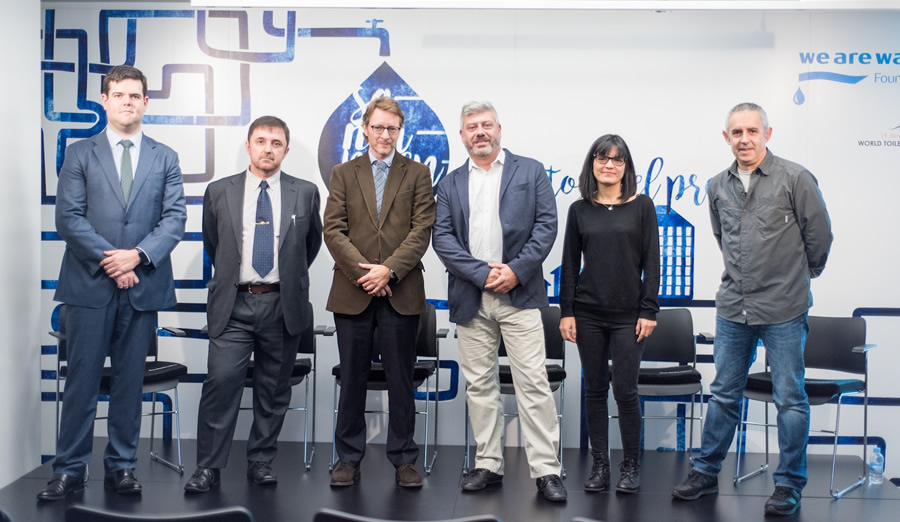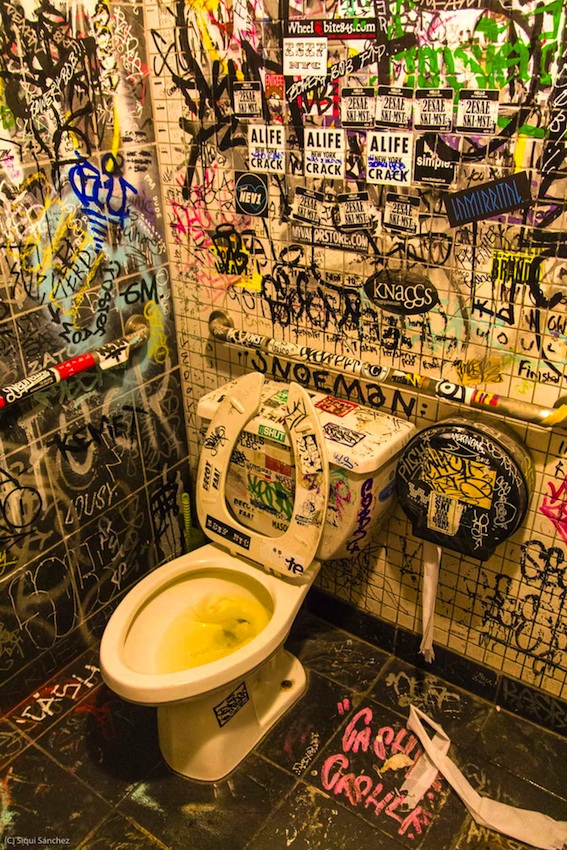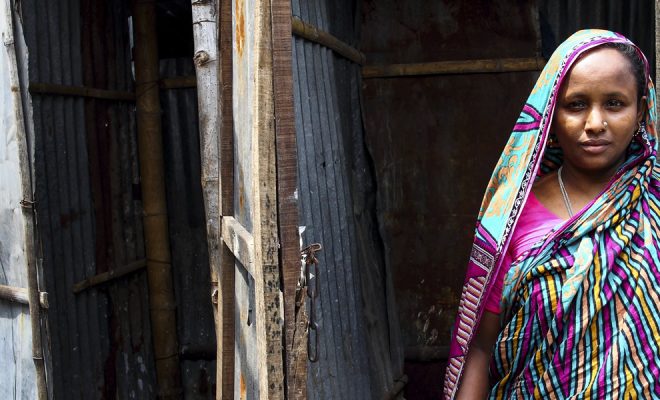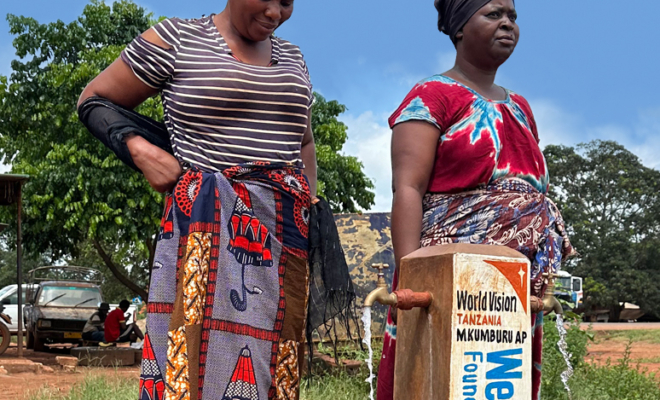It is not enough to invest in latrines and sanitation facilities in those countries that need it, it is essential to create culture: to familiarize potential users with these facilities so that they will use them. This means integrating the latrine and sanitation in their everyday space. This is an essential matter in order to progress in those societies with no access to a decent latrine and where taboos in hygienic practices still exist.
This binding coupling between culture and sanitation marked the conclusions reached at the round table Sanitation: the engine of progress organised by the We Are Water Foundation at the Roca Madrid Gallery, to commemorate WTD.

In the image, from left to right, David Escobar, founding partner of iAgua, moderated the debate with five experts in sanitation; Fernando Espejo, Public Works Technical Engineer; Xavier Torras, director of the We Are Water Foundation; Angel Morillo, archaeologist; Aniza García, lawyer and member of the Advisory Panel of the Water and Sanitation Cooperation Fund until 2012; and Siqui Sánchez, professional photographer in charge of the project Toilet Planet.
Fernando Espejo, during the debate, focused first on culture rather than on technology: “The problem of sanitation has a very high cultural component. Therefore, if you do not show it and you do not implement an educational programme in the country, the technological solutions and the implementation of toilets will be of no use.”
Moreover, in those places where sanitation is a priority problem, there is always a technological barrier when installing latrines if we take the formula of developed countries as a reference. This is a basic error for Espejo: “We will fail if we follow this path. We need to arrive at the country, see its culture, understand it and put ourselves in their place. With this starting point we will then be able to start working.”
For his part, Xavier Torras highlighted that sanitation needs to be based on education: “In countries such as India, where toilets are not used, it is necessary to cause a cultural breakdown, educational programmes need to be created in order to be able to install latrines afterwards.”
Torras emphasized the need to search and create specific solutions according to each culture and civilisation: “Doubtlessly, we need to find solutions that work in those civilisations where toilets are not used or where they are not linked to their culture. There is no use in installing one hundred latrines and leaving. No one will use them the following day.”
When we address sanitation from the cultural point of view, it becomes a social matter and education becomes the best antidote to fight exiting taboos linked to hygienic practices.
Siqui Sánchez, from the perspective of the project Toilet Planet, declared: “Photography is a good channel to provide visibility to the problem, sanitation should no longer be a taboo, and we can raise awareness of this problem in societies. Only if we do this will it be possible to work in a solution to alleviate the lack of access.”
In order to contribute to change the problem of sanitation, we need to put ourselves in the place of those who suffer it. One of the ways to solve it is to increase awareness and to do that we need to educate.
Ángel Morillo detailed that “to raise awareness among developed countries, where it is impossible to imagine some place without a toilet, it is essential to become aware of the importance of the problem.”
Meanwhile, Aniza García stressed that “sanitation is an essential human right, but there are still inequalities. For this reason, we need to work to raise awareness and to handle this right accordingly.”

©Siqui Sánchez – The picture of this toilet has been taken in a bar in New York City, although I do not remember the name. It does not matter, because this type of toilet is a classic. There are hundreds, even thousands of toilets like this in large American and European cities. Dirt may exceed a certain threshold, after which it is considered an artistic-cultural manifestation.





